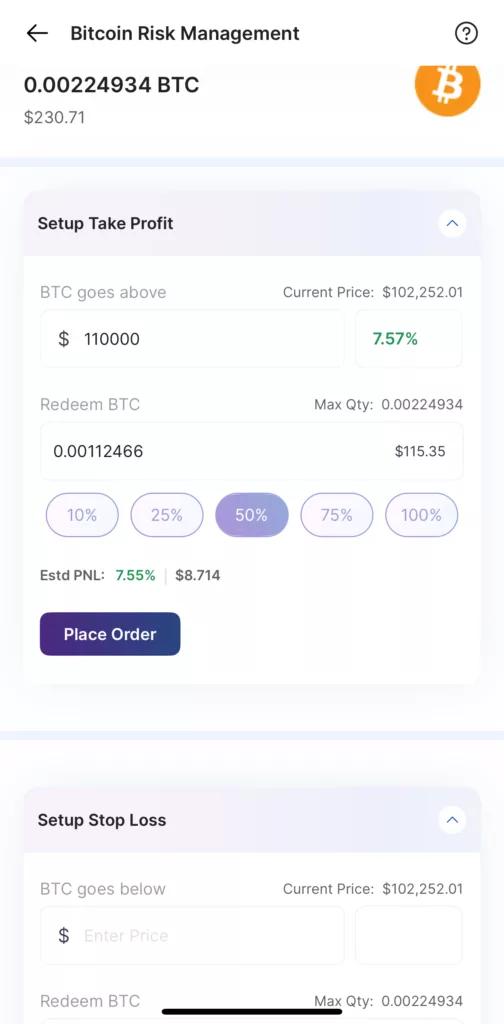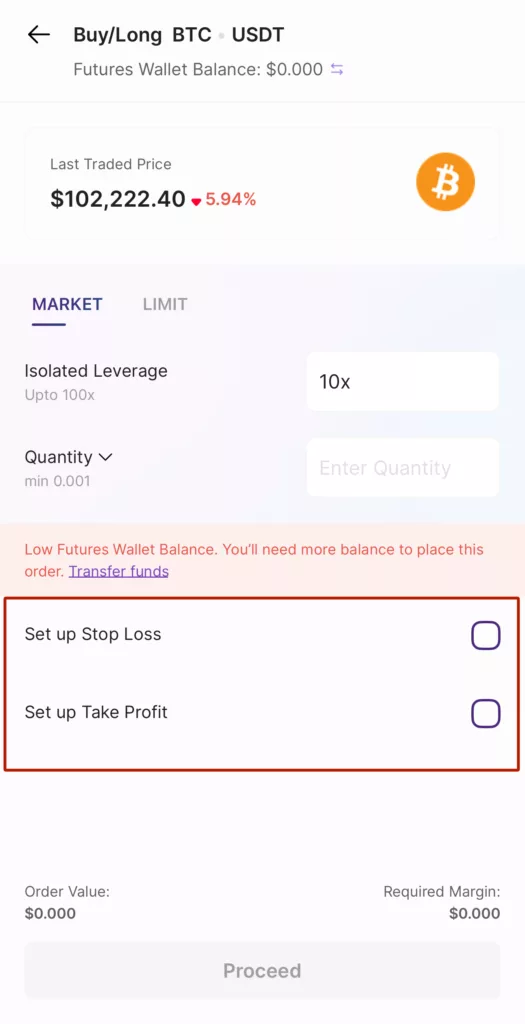
Take Control of Your Trades with Stop-Loss and Take-Profit Strategies
Futures trading is full of surprises where even well-planned trades can go wrong. Markets can move quickly, turning small losses into big ones or wiping out profits in an instant. Many traders, especially beginners, wonder why their trades fail despite careful research.
The answer lies in the absence of a proper risk management strategy that defines when to exit a trade.
The lack of clear exit strategies often results in poor outcomes, highlighting the need for structured tools like stop-loss and take-profit orders.
In this blog, we will explore what stop-loss and take-profit orders are and how you can use them to manage risk and secure profits effectively in futures trading.
Stop Loss and Take Profits: The Basics
Stop Loss and Take Profits, known as SL and TP in Crypto trading circles are automated price levels where trades are closed without manual intervention.
SL and TP function is available on most trading platforms, where traders can set their desired stop-loss and take-profit levels before executing a trade.
Once the trade is live, the platform automatically monitors the market and closes the position when the price reaches the predefined stop-loss or take-profit level, ensuring the trader’s risk management strategy is followed without the need for constant monitoring.


Essentially, both SL and TP are automatic exit points for your trades which allow you to protect risk. Here is how they are different:
| Feature | Stop-Loss | Take-Profit |
| Purpose | Limits potential losses | Secures profits when the market moves in your favour |
| Execution | Automatically closes | Automatically closes |
| Activation | When the price falls to a certain level | When the price rises to a certain level |
| Risk Management | Protects capital by limiting downside risk | Maximises gains by capturing profits |
Stop Loss and Take Profit in Coin Trading (Spot Crypto Trading)
SL: When you buy a coin you can set a stop-loss order at a specific price below your entry point. If the asset’s price falls to that level, the stop-loss order automatically triggers and sells your position to limit further losses.
This helps you protect your investment by cutting losses before they grow too large, ensuring you don’t lose more than you’re willing to risk.
TP: Take-profit order is placed above your entry price. If the coin’s price rises to that level, the take-profit order automatically triggers and sells your position to secure your profits. This ensures that you don’t miss out on potential gains when the market moves in your favour.
SL and TP in Crypto Futures Trading
SL and TP work similarly in future trading, but with key differences due to leveraged positions. Futures allow traders to speculate on price movements with borrowed funds, making effective risk management even more critical.
Stop-Loss(SL) in Futures Trading: Suppose Bitcoin is trading at $100,000, and you expect its price to rise, so you open a long position. To protect yourself from a big loss, you set a stop-loss at $95,000. If the price drops to $95,000, your stop-loss order will close the trade automatically, limiting your loss to $5,000. Without this, your losses could grow even more if the price falls further.
Take-Profit in Futures Trading: Imagine Solana’s price is $30, and you enter a long position hoping it will go up. You set a take-profit order at $35. If the price reaches $35, your take-profit order will automatically sell your position, securing your profit of $5 per Solana. This helps you lock in gains instead of waiting and risking a drop in price.
Common Mistakes When Using SL and TP
Managing risk is more important than chasing profits. Using SL and TP incorrectly can hurt your trades. Many beginners fall into traps that seasoned traders avoid with experience. Let’s explore common mistakes and how to fix them, with insights from experienced crypto traders.
1. Setting Stop-Loss Too Close to the Entry Point
This would result in minor price fluctuations triggering SL, leading to frequent premature exits.
Example: Suppose Bitcoin is trading at $20,000, and you set a stop-loss at $19,950. A small dip could close your trade unnecessarily, even if the price soon rebounds.
To avoid this mistake, you can use technical indicators like support and resistance levels or volatility measures such as the Average True Range (ATR) to position your stop-loss at a safe distance from minor price swings.
2. Ignoring Market Volatility
High volatility can push prices beyond expected ranges. Say you placed a Take-Profit order for Solana at $35, but a sudden surge could push it to $40. Instead you should adjust your SL and TP levels dynamically to match the bigger price movements.
One way is to use the Average True Range (ATR) volatility indicator.
if the ATR is $2 for Solana, you can set your stop-loss and take profit 1.5 to 2 times the ATR away from your entry price, depending on your risk tolerance. So, if Solana is at $30, your stop-loss could be set between $28 to $27.
Looking for more expert tips and strategies to boost your trading? Join Mudrex’s official Telegram channel for regular insights and updates to help you make smarter, more informed decisions.
3. Setting an Unrealistic Take-Profit Target
Hoping for massive profits leads traders to place take-profit orders far from realistic price levels.
Suppose Bitcoin is trading at $100,000, and you expect its price to rise. Instead of setting a reasonable take-profit at $105,000, you set it at $150,000. If the price only climbs to $106,000 before reversing, your trade misses a chance to lock in profits.
One approach is to set take-profit (TP) and stop-loss (SL) levels using a risk-reward ratio. Here’s how to do that:
- Suppose you are comfortable risking ₹1,000 on a trade. This amount represents your stop-loss distance, meaning if the trade moves against you by ₹1,000, the position will close to limit your loss.
- Choose a risk to reward ration: Say 1:2. This means that for every ₹1 profit, you want to make ₹2 profit. So if your SL is ₹1000 below entry price, TP should be ₹2000 above entry price.
This way you would have a structured approach to trading where rewards outweigh risks, making your trading more disciplined and less emotional.
Conclusion
As a beginner, using SL and TP is a smart way to navigate the unpredictable crypto market. Having a clear exit strategy is essential in Futures trading for managing risk and securing profits. Stop-Loss and Take-Profit orders help you maintain discipline, reduce stress, and avoid emotional decision-making.
But how can you easily set up these strategies without feeling overwhelmed or constantly monitoring the market? This is where Mudrex comes in. Mudrex offers a user-friendly platform that allows you to automate your SL and TP levels effortlessly, ensuring you stay in control while saving time and reducing the stress of manual trading. With Mudrex, you can trade smarter, secure profits, and protect your investments with ease. Download the app and start your Crypto trading journey with ease.





